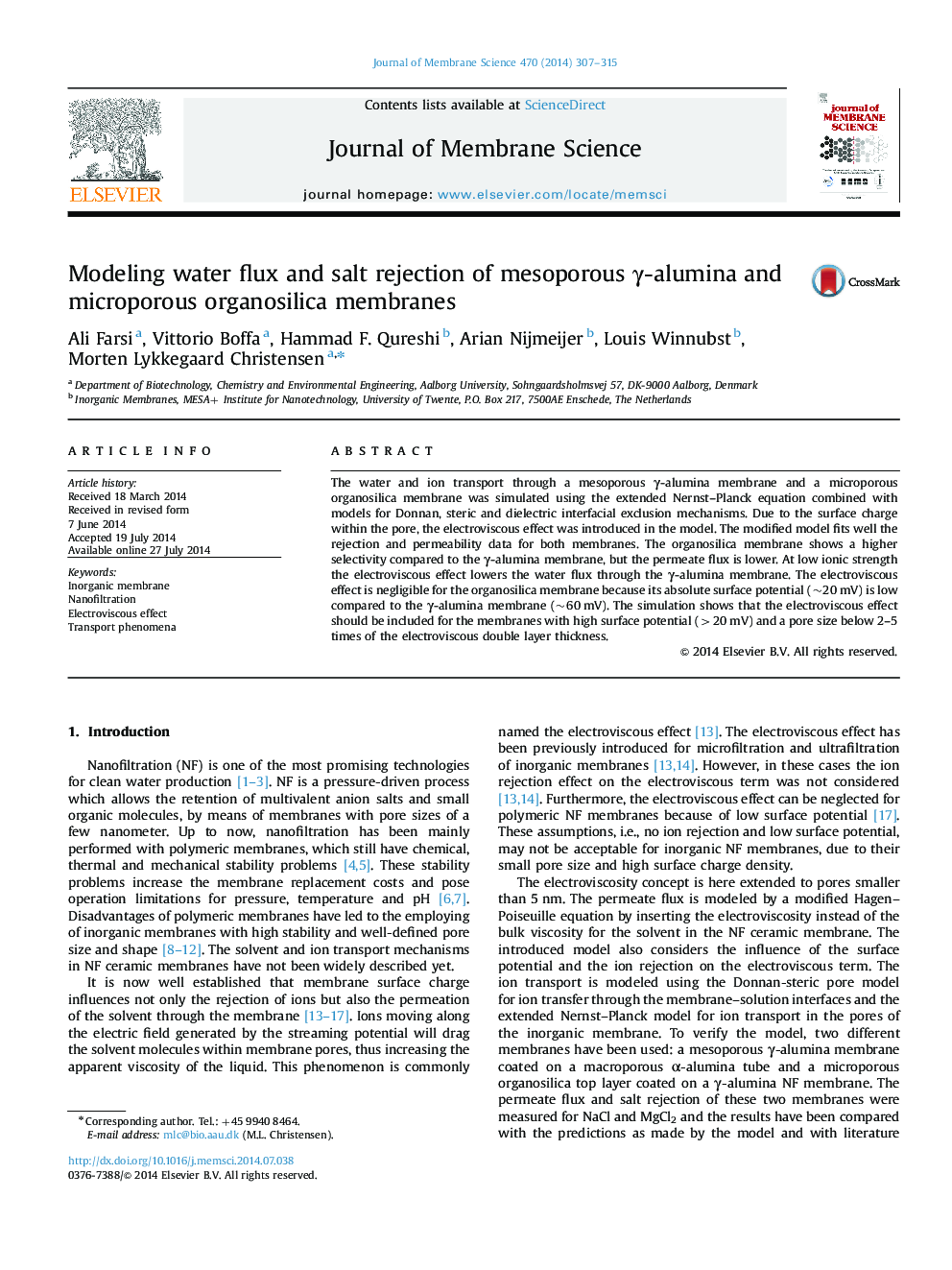| Article ID | Journal | Published Year | Pages | File Type |
|---|---|---|---|---|
| 633331 | Journal of Membrane Science | 2014 | 9 Pages |
•The water flux and salt rejection of an organosilica and a γ-alumina membrane.•The water flux was modeled using the electroviscous effect in the HP equation.•At low ionic strength the electroviscous effect lowers water flux through the membrane.
The water and ion transport through a mesoporous γ-alumina membrane and a microporous organosilica membrane was simulated using the extended Nernst–Planck equation combined with models for Donnan, steric and dielectric interfacial exclusion mechanisms. Due to the surface charge within the pore, the electroviscous effect was introduced in the model. The modified model fits well the rejection and permeability data for both membranes. The organosilica membrane shows a higher selectivity compared to the γ-alumina membrane, but the permeate flux is lower. At low ionic strength the electroviscous effect lowers the water flux through the γ-alumina membrane. The electroviscous effect is negligible for the organosilica membrane because its absolute surface potential (~20 mV) is low compared to the γ-alumina membrane (~60 mV). The simulation shows that the electroviscous effect should be included for the membranes with high surface potential (>20 mV) and a pore size below 2–5 times of the electroviscous double layer thickness.
